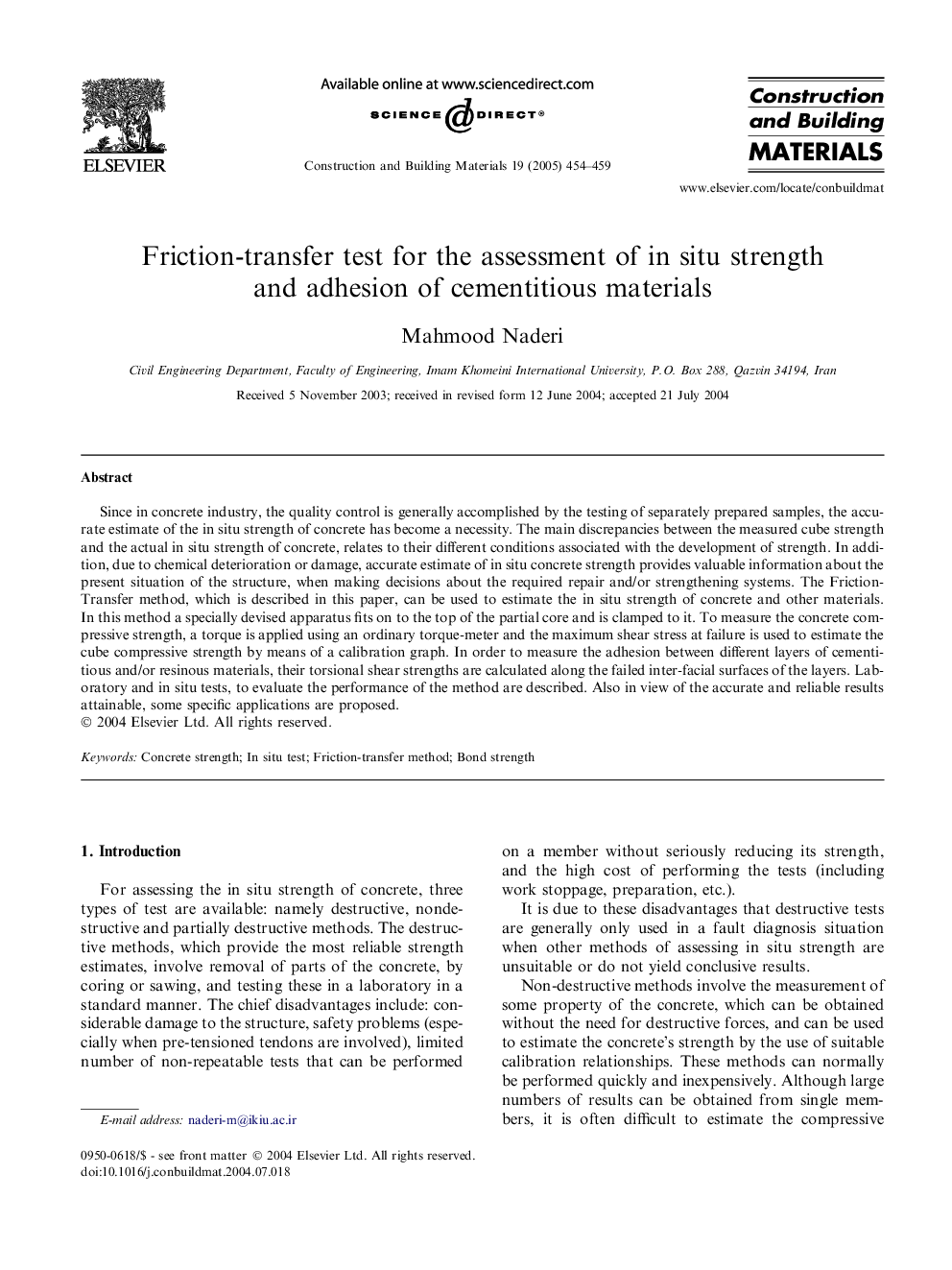| Article ID | Journal | Published Year | Pages | File Type |
|---|---|---|---|---|
| 10285317 | Construction and Building Materials | 2005 | 6 Pages |
Abstract
Since in concrete industry, the quality control is generally accomplished by the testing of separately prepared samples, the accurate estimate of the in situ strength of concrete has become a necessity. The main discrepancies between the measured cube strength and the actual in situ strength of concrete, relates to their different conditions associated with the development of strength. In addition, due to chemical deterioration or damage, accurate estimate of in situ concrete strength provides valuable information about the present situation of the structure, when making decisions about the required repair and/or strengthening systems. The Friction-Transfer method, which is described in this paper, can be used to estimate the in situ strength of concrete and other materials. In this method a specially devised apparatus fits on to the top of the partial core and is clamped to it. To measure the concrete compressive strength, a torque is applied using an ordinary torque-meter and the maximum shear stress at failure is used to estimate the cube compressive strength by means of a calibration graph. In order to measure the adhesion between different layers of cementitious and/or resinous materials, their torsional shear strengths are calculated along the failed inter-facial surfaces of the layers. Laboratory and in situ tests, to evaluate the performance of the method are described. Also in view of the accurate and reliable results attainable, some specific applications are proposed.
Related Topics
Physical Sciences and Engineering
Engineering
Civil and Structural Engineering
Authors
Mahmood Naderi,
